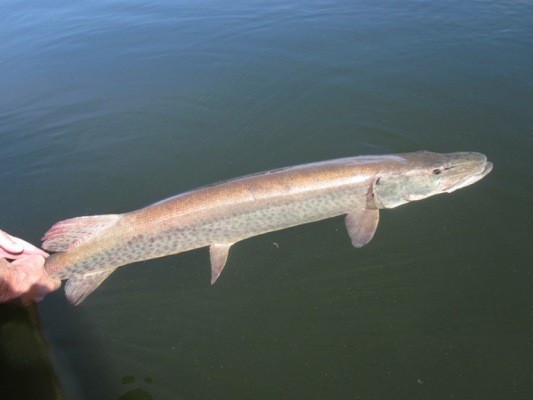|
|

Posts: 8849
| Is this possible, or am I dreaming? On many of the lakes with no natural reproduction It seems to me that it would be fairly easy to identify the areas where muskies spawn, and then make those areas more conducive to egg survival so the eggs hatch.
Maybe I'm missing something, but isn't the lack of reproduction most often related to shoreline development, silt, and lack of proper bottom composition???
|
|
| |
|
Posts: 190
| There is a gentlemen in Wisconsin studying this with the help of the DNR this season. They are going to try and find a suitable fill for spawning areas and see if it is possible to broadcast fertalized eggs in these areas. This might teach hatchlings to return to these areas to spawn when they reach maturity and create more selfe sustaining lakes.Doug Bradley |
|
| |
|
Posts: 178
| There is no question that there are minimum spawning site characteristics that must be met in order for muskellunge eggs to survive and hatch. However, such conditions exist in many waters where recruitment (survival to a length of 20 inches by my definition) of muskellunge is nil. In such instances, I submit that fish community composition becomes the overriding factor in determining whether naturally hatched musky ever become adult fish. We know that muskellunge recruitment is low or nonexistent in lakes with ABUNDANT northern pike and largemouth bass, regardless of the quality of musky spawning habitat. Certain factors can mitigate for the presence of northern pike and largemouth bass and allow at least some young muskellunge to survive to adulthood. But many lakes dominated by pike or largemouth bass simply will never be good musky fisheries unless stocked with musky fingerlings large enough (10-12 inches) to evade predation by pike under 18 inches and largemouth bass of all sizes.
Dave Neuswanger
Fisheries Team Leader, Upper Chippewa Basin
Wisconsin DNR, Hayward |
|
| |


